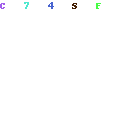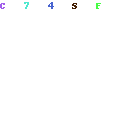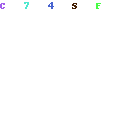Scoliosis Brace Under Clothes
A scoliosis brace, also known as a spinal orthosis, is a medical device used to help manage and treat scoliosis, which is a condition characterized by an abnormal curvature of the spine. Wearing a scoliosis brace under your clothes is a common practice to provide support and stability to the spine while maintaining a more discreet and cosmetically pleasing appearance.
Here are some key points to consider when wearing a scoliosis brace under clothing:
Consult with a healthcare professional: Before using a scoliosis brace, it’s essential to consult with a medical specialist, such as an orthopedic doctor or a certified Orthotist. They will assess the degree of your scoliosis and recommend the appropriate type of brace, along with guidelines for when and how long to wear it.
Custom-fit: Scoliosis braces are typically custom-made to fit your body, ensuring they provide the most effective support. A well-fitted brace will be more comfortable and less noticeable under clothing.
Choose the right clothing: When wearing a scoliosis brace, you’ll want to select clothing that accommodates the brace’s bulk and straps. Loose-fitting shirts, blouses, or sweaters are often more comfortable and can help conceal the brace.
Layering: Layering your clothing can help further hide the brace. For example, you can wear a snug-fitting undershirt or tank top beneath your regular clothing to reduce friction and make the brace less visible.
Fabric choice:
Choose clothing made from soft, breathable materials to reduce discomfort and irritation. Avoid scratchy or rough fabrics that might cause chafing.
Fastening and adjustments: Ensure that the brace is fastened securely according to your healthcare provider’s instructions. It may have straps or closures that need to be adjusted regularly to maintain the appropriate level of support.
Body awareness: Practice good posture and body awareness when wearing a brace. This can help you adapt to the brace more easily and reduce any discomfort or awkwardness.
Hygiene and maintenance: Regularly clean and maintain the brace to prevent odors and discomfort. Follow the care instructions provided by your healthcare professional.
Self-confidence and support: It’s important to have a support system, including friends and family, who can provide emotional support and encouragement while you adapt to wearing a scoliosis brace.
Best Brace Under Clothes For Scoliosis
Sparthos Back Brace for Lower Back Pain – Immediate Relief from Sciatica, Herniated Disc, Scoliosis – Breathable Design With Lumbar Support Pad – For Home & Lifting At Work – For Men & Women – (Large)

SHAPERKY Posture Corrector for Women and Men, Adjustable Upper Back Brace for Posture Hunchback Support and Providing Pain Relief from Neck, Shoulder, and Upper Back

Model Back Brace – Immediate Relief from Back Pain, Herniated Disc, Sciatica, Scoliosis | FSA or HSA eligible | Breathable Waist Lumbar Lower Back Support Belt with Removable Pad.

Scoliosis Brace Under Clothes Pros And Cons
Scoliosis braces, also known as spinal orthoses, are used in the treatment of scoliosis, a condition characterized by an abnormal curvature of the spine. Like any medical intervention, scoliosis braces have their pros and cons.
Pros:
- Curve stabilization: Scoliosis braces are designed to prevent the progression of spinal curvature in growing individuals, particularly during adolescence. They can help stabilize and reduce the degree of curvature, which can be especially important for preventing further health issues.
- Non-surgical option: Bracing is a non-invasive treatment approach that can be an alternative to surgery in many cases. It may be recommended as a first-line treatment for adolescents with moderate scoliosis to avoid the need for surgery.
- Effective in certain cases: Bracing is most effective in treating mild to moderate scoliosis and can halt or slow the progression of the curvature. It may be a viable treatment option for those who are not surgical candidates or prefer to avoid surgery.
- Cosmetic appearance: Braces can be designed to be relatively discreet and can often be concealed under clothing. This can be important for a teenager’s self-esteem and body image.
- Psychological support: The use of a scoliosis brace can provide psychological and emotional support for individuals and their families, as it offers a sense of actively managing the condition.
Cons:
- Discomfort and inconvenience: Wearing a scoliosis brace can be uncomfortable, especially during the initial adjustment period. It can restrict movement and make some activities challenging.
- Compliance: Successful brace treatment requires strict adherence to the prescribed schedule, often involving wearing the brace for many hours each day. Achieving good compliance can be difficult, especially for adolescents.
- Potential for muscle atrophy: Prolonged use of a brace can lead to muscle weakness in the back due to reduced muscle engagement. This weakness can require physical therapy after brace discontinuation.
- Limited effectiveness in severe cases: Bracing is generally not effective for severe or rigid curves that have already progressed significantly. In such cases, surgical intervention may be necessary.
- Social and psychological impact: Wearing a brace can have a social and psychological impact on adolescents. It may lead to self-consciousness, body image concerns, and reduced self-esteem. Peer acceptance can also be challenging.
- Financial cost: Braces can be expensive, and the financial burden may fall on the patient’s family. Insurance coverage can vary, and not all plans cover the full cost of the brace.
- Maintenance and hygiene: Maintaining and cleaning the brace regularly can be a demanding task. Failure to do so can lead to discomfort and skin problems.
FAQs About Scoliosis Brace Under Clothes
Can I wear a scoliosis brace under my regular clothing?
Yes, scoliosis braces are designed to be worn under clothing. They can be concealed under loose-fitting shirts, blouses, or other garments to maintain a more discreet appearance.
How do I choose the right clothing to wear with a scoliosis brace?
Select clothing that accommodates the brace’s bulk and straps. Loose-fitting clothing is generally more comfortable and helps hide the brace. Layering with a snug-fitting undershirt can also help.
Can I wear a scoliosis brace with dresses or formal attire?
It’s possible to wear a scoliosis brace with dresses and formal attire, but it may require some creativity in choosing clothing that conceals the brace. A-line dresses or those with empire waists may be more suitable.
Is a custom-fitted scoliosis brace more comfortable under clothing?
Yes, a custom-fitted brace is designed to fit your body and provide better comfort and support. It will likely be less noticeable under clothing compared to a poorly fitted brace.
What types of fabrics are best to wear with a scoliosis brace?
Choose clothing made from soft, breathable materials to reduce discomfort and skin irritation. Avoid scratchy or rough fabrics that might cause chafing.
Do I need to adjust my clothing throughout the day when wearing a brace?
You may need to make minor adjustments to your clothing to ensure the brace remains concealed and comfortable. Check that the brace is secure and not causing any friction.
How long should I wear my scoliosis brace each day?
The recommended duration for wearing a scoliosis brace varies depending on the individual and their specific treatment plan. Typically, it’s worn for around 16-23 hours a day.
Can I remove the brace for activities like showering and sports?
Depending on your healthcare provider’s recommendations, you may be allowed to remove the brace for certain activities, such as showering and participating in sports. Always follow your doctor’s guidance.
Will wearing a scoliosis brace affect my self-esteem or body image?
It’s common for adolescents to have concerns about body image and self-esteem while wearing a brace. Having a support system, including friends and family, can help provide emotional support.
How do I maintain and clean my scoliosis brace for hygiene purposes?
Your healthcare provider will provide specific care instructions. Generally, braces should be cleaned regularly with mild soap and water, and any padding or liners should be replaced as needed.
Is it possible to fully conceal a scoliosis brace under clothing?
While a scoliosis brace can be discreet, it may not be entirely invisible. The priority is to provide effective treatment, and the cosmetic aspect is secondary. Nonetheless, with proper clothing choices, you can significantly minimize its visibility.
What if I have skin irritation or discomfort from wearing the brace under clothing?
If you experience skin irritation or discomfort, consult your healthcare provider. They can provide guidance on addressing these issues and making the brace more comfortable.







